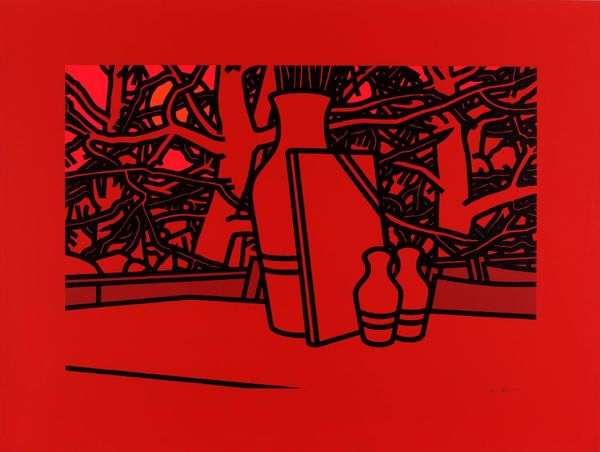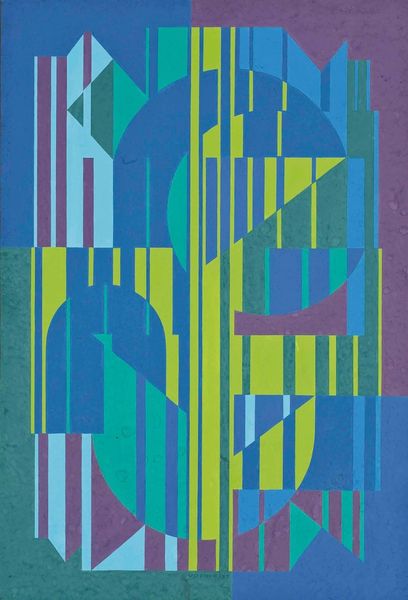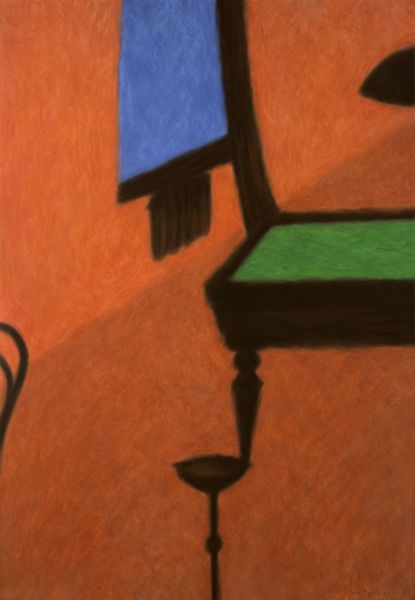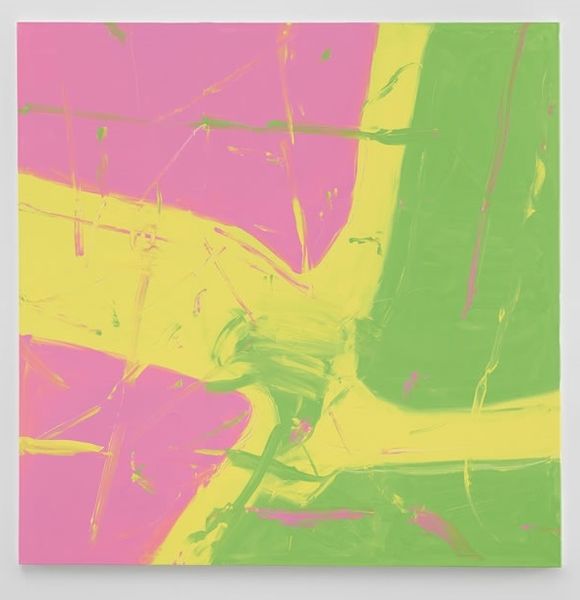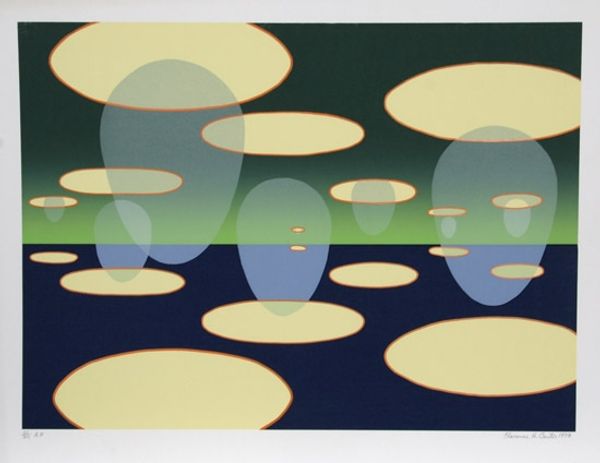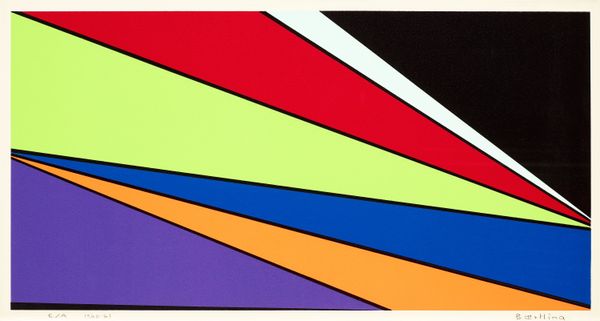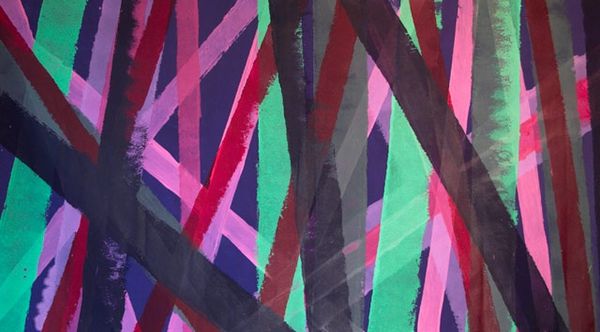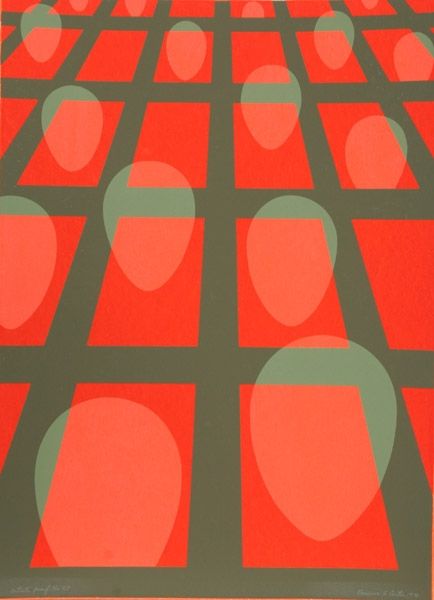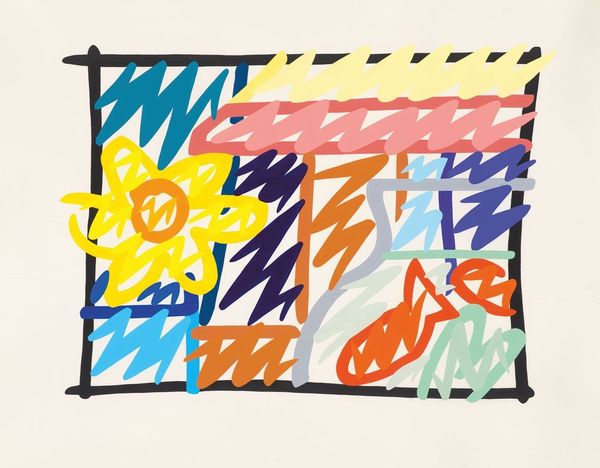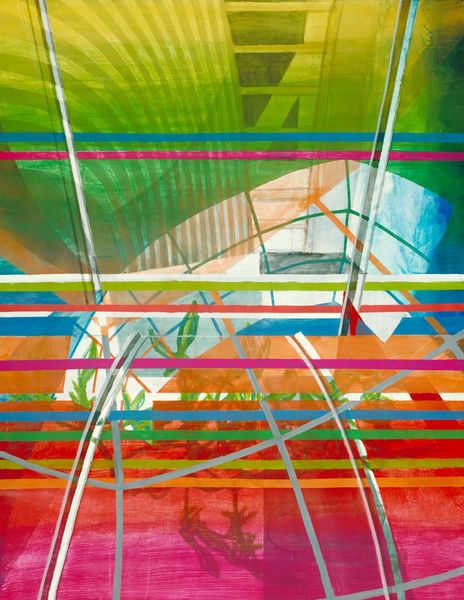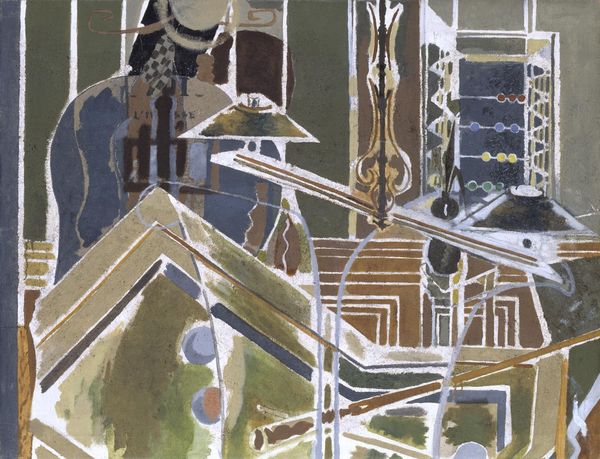
pop art-esque
childish illustration
cartoon like
cartoon based
vector art
pop art
vector illustration
line
cartoon style
psychedelic
cartoon theme
Copyright: Patrick Caulfield,Fair Use
Editor: So, here we have Patrick Caulfield’s "Lamp and Pines" from 1975. It's quite striking, almost like a pop art take on domestic space. The hard lines and that intense green... It feels a little unsettling, even with such an everyday object as a lamp. What social commentaries do you believe are presented here? Curator: That’s a keen observation! It's interesting how Caulfield takes these familiar, mundane settings and imbues them with a certain tension. Think about the role of the domestic sphere, particularly in the 70s. For many, the home was evolving into a space reflecting new found freedoms. Caulfield subverts this notion using rigid lines and flat color fields to represent an interior setting. Is he commenting on the false utopia in consumer culture, specifically related to our intimate spaces, by stripping away emotional and sensuous features through stark visual design? Editor: That’s fascinating! I never really considered the lamp as part of this larger socio-political conversation. I suppose, when I first looked at the painting, I viewed the "Lamp" merely as an emblem of suburban life, yet it sounds like Caulfield offers more biting criticism. Curator: Exactly! Caulfield deliberately blurs the boundaries of representation, so we as a culture are made to grapple with meaning itself. The flat planes could speak to a flattening of societal structures or gender roles. This lamp, a typically passive object, takes center stage, and seems to emit tension, pushing back on the expectations of a ‘conventional’ interior. Don’t you think the strong use of lines has phallic connotations? Editor: Hmm, I see what you mean. Curator: And those vibrant colors, so evocative of advertising... Were do you think is our place, as audience members in this cultural conversation. Editor: I now think about domestic comfort as potentially loaded, with ideas about gender, social class, and the false promises of consumerism that have been really highlighted. It will certainly cause me to think of interiors in a different way. Curator: Excellent. Caulfield forces us to recognize our passive consumption in shaping identity through designed space and commercial objecthood, so it sounds like we’ve both started questioning the seemingly benign environments that frame our lives.
Comments
No comments
Be the first to comment and join the conversation on the ultimate creative platform.
